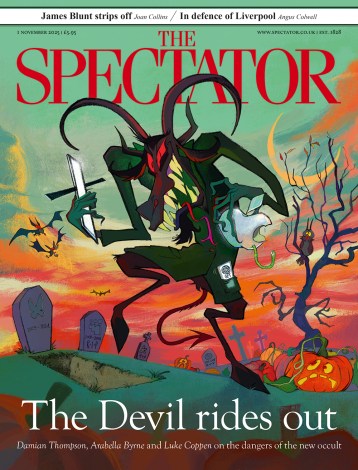On 30 January 1972, a 41-year- old man named Barney McGuigan stepped out from behind a block of flats in Londonderry. Some witnesses saw a white handkerchief in his hand, others remember his hands being empty. Across the road, a soldier from the 1st Battalion of the Parachute regiment was seen by another soldier going down on one knee to a firing pos-ition. A bullet entered McGuigan’s head from the back. The head exploded, as one witness told the judge, ‘like a tomato’.
Thirty years after this incident the soldier accused of firing that shot, Soldier ‘F’, testified in London. In the humming air-conditioned room, a mortuary photo of McGuigan’s head was shown to him at the request of the family’s lawyer. Soldier ‘F’ had stonewalled every question put to him. The silence was broken by an eruption of sobbing. McGuigan’s widow, gasping with grief, was escorted from the room by family. The smart young woman typing notes beside the judges tried to keep typing while wiping tears from her eyes.
If there had been any point to the Saville inquiry into Bloody Sunday, it would have been to provide answers to such bereaved. Yet the sad truth is that nothing that happened on that day has been agreed upon. And far from closing wounds, the whole exercise may actually end up reopening them.
The final report of the inquiry is published next week. Announced by Tony Blair in the Commons in 1998, its final price-tag is a record-breaking £200 million. After seven years, it broke another record, overtaking the impeachment of Warren Hastings as the lengthiest legal process in British history.
The fresh inquiry was offered in the run-up to the Good Friday agreement as part of the bargaining process. For three decades Bloody Sunday has been remembered by Irish Republicans as the British army’s day of infamy. With 13 civilians killed on British streets, it was also the IRA’s most successful recruiting tool.
The first inquiry, conducted by Lord Widgery, reported within three months of events, in April 1972. That inquiry found that the soldiers of 1 Para had been fired upon first, that their own firing had ‘bordered on the reckless’ but that there would not have been any deaths had there not been an illegal civil-rights march in the city that day. Among Republicans, Widgery has ever since been a byword for British establishment whitewash as well as fertile ground for the most paranoid Republican conspiracies.
So in 1998 Britain agreed to go through the whole process again with an obvious if unstated signal. There was only a point to the new inquiry if it arrived at different conclusions from its predecessor. For many Republicans that meant only one thing: evidence that the day had been the result of a conspiracy from the very top of the British army and government.
Thousands of people who were on the streets of Derry that day in 1972 were sought, with more than 1,500 witness statements considered. Hearings began in 2000 at the Guildhall in Londonderry. The opening speech by counsel for the inquiry set the first record, lasting 42 days, before the first witnesses started appearing. In 2002-2003 the inquiry moved to Central Hall, Westminster, to hear from politicians, soldiers and an unprecedented number of former British intelligence agents. It then returned to Londonderry, with the full phalanx of lawyers representing the many parties, to hear from Martin McGuinness as well as a number of IRA gunmen who at the very last hour had come forward, under alias, to admit that they had fired on British troops that day.
By the time of the final hearings in 2005, nearly 1,000 people, including Edward Heath, had appeared before Saville and the two accompanying judges, giving 20 million words of evidence. More than 14 lawyers at the inquiry made more than £1 million each.
From 2002 to 2003 I spent a year there. Press interest had long since fallen off so I was one of only a couple of journalists who went every day to watch the testimony of British soldiers, politicians and intelligence agents. When the inquiry went back to Derry I followed it to see Martin McGuinness testify. I went in the hope that a clear story would emerge. In truth, the picture, though fascinating, could not have been muddier. For all the witness testimony, computer wizardry, ballistic reports, trajectory maps, forensic analysis, political theorising and common hearsay, 40 years on is no time to start getting to the truth.
Take, for instance, the gruesome detail of Barney McGuigan’s eyelid landing on a wall. At some point, once the shooting had stopped and people were milling around his body, somebody picked up the eyelid, placed it in a matchbox and put the matchbox beside the body. At the inquiry, one woman testified that her friend Jim took the eyelid down. Another said it was their friend Mickey. Another their friend Noel. Numerous witnesses said they saw the eyelid there the next day. Others said they took it down. One testified that he was given the matchbox, that he gave it to his brother who asked a priest what to do with the eyelid and was told to put it in holy ground. Another witness saw two eyelids.
Were any of these people wrong? Certainly: possibly all of them. But were they lying? Almost certainly not. They were saying what they remembered. Perhaps one of them was the person who placed the eyelid by the body. Perhaps others transferred something they heard about and took into their own memory.
Over the course of nearly four decades the truth had become messy and memories had amalgamated, shifted and been remade. Even during everyday incidents people come up with different versions of what they have seen. Place people amid deeply traumatic events, with crowds fleeing down narrow lanes, bodies lying in familiar streets and shots ricocheting in all directions and then try to recreate what people think they saw three decades later, and the possibility of arriving at a truth is all but impossible.
At the heart of Lord Saville’s quest lie two huge problems. For years Republican lore agreed that the Parachute regiment ran into Londonderry and gunned down civilians in cold blood. Yet as Saville demonstrated, the idea that there was no civilian gunfire is untrue. Who fired the first shot? We will probably never know.
Saville also showed that there was no evidence of a political conspiracy. So the most the families can expect is a judgment that certain members of the Parachute regiment, including soldier ‘F’, should be held responsible for causing loss of life. Which is a long and costly process to arrive at a judgment not much different from Widgery’s. It will then be decided whether such soldiers, now almost four decades on, should face trial. The fact is that this is not what Republicans wanted from this process. So they will leave dissatisfied. And how will it sit with most British people if, now almost every IRA killer is out of prison, members of 1 Para start going inside? In other words this inquiry, for all its fascination, will leave everybody unhappy.
The second Bloody Sunday inquiry was meant to draw a line under what was not just Londonderry’s worst day, but one of the British army’s worst days. Thirty-eight years ago, in the space of about 25 minutes, some men commanded by Colonel Wilford of 1 Para lost sight of the policing operation they were so unwisely sent on and began firing. Any lessons the British army could have learnt from this can be learnt only theoretically now. Among the soldiers who did the most firing, some went into special forces and some are now dead.
In 1999, in an otherwise unwise Radio 4 interview, Colonel Wilford, the man who commanded 1 Para that day, gave vent to the feelings of many. ‘I have to ask,’ he said, ‘what about
Bloody Wednesday, Thursday, Friday and every day of the week?
‘What about Bloody Omagh? What about Bloody Warrenpoint, Enniskillen, Hyde Park, or Bloody Aldershot and Brighton — bloody everything the IRA have ever touched.’
It is a good question. Colonel Wilford, like his men, lives in his retirement wondering whether the law will come for him. Yet one other commander, a paramilitary commander, has, like certain other men who fired that day, never looked back and shares none of the worries of British soldiers. The man I watched grandstanding in the Guildhall of Londonderry is too busy being Deputy First Minister of Northern Ireland. And nobody, but nobody, would order an inquiry into him. Or any of the other bloody things he and his bloody movement ever bloody touched. This is one-directional justice. Each individual will have to work out for themselves whether this constitutes the mature behaviour of a democracy at its very best, or a wasteful exercise in appeasing a political sympathy that has been appeased for too many years.






Comments